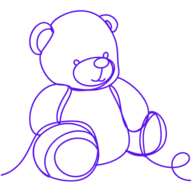Welcome to our deep dive into the latest trends that are currently shaping the toy industry. This dynamic sector is constantly evolving, driven by innovative technology, changing consumer preferences, and the ever-growing influence of digital media. In this blog post, we'll explore these trends in detail, shedding light on how they're impacting the industry and what they mean for the future of play.
The Rise of Educational Toys
Educational toys are experiencing a significant surge in popularity. Parents and educators alike are recognizing the value of play in learning and development. This trend is driving a shift in the toy industry, with manufacturers increasingly focusing on creating toys that are not just fun, but also educational.
Toys that promote STEM (Science, Technology, Engineering, and Mathematics) learning are particularly in demand. These toys help children develop critical thinking and problem-solving skills, preparing them for a world that is increasingly reliant on technology. From coding robots to science experiment kits, these toys are making learning fun and engaging.
Moreover, manufacturers are also focusing on toys that promote social and emotional learning. Board games that encourage cooperation, dolls that help children understand emotions, and role-play toys are all part of this trend. These toys are helping children develop empathy, resilience, and social skills, which are just as important as academic skills in today's world.
The Impact of Digital Technology
Digital technology is revolutionizing the toy industry. From virtual reality to AI-powered toys, technology is making play more interactive and immersive. This trend is driven by the digital-native generation of children who are growing up with smartphones and tablets.
One of the most significant trends in this area is the rise of app-connected toys. These toys use smartphone or tablet apps to enhance play, offering a blend of physical and digital experiences. For example, some action figures now come with companion apps that unlock additional features or content.
Another trend is the growing popularity of augmented reality (AR) in toys. AR allows children to interact with digital elements in the real world, creating a unique play experience. For instance, some puzzle games now use AR to bring the completed puzzle to life.
The Influence of Pop Culture
Pop culture continues to have a significant impact on the toy industry. Children's movies, TV shows, and video games often drive toy trends, with manufacturers releasing toys based on popular characters and franchises.
The success of franchises like Star Wars, Marvel, and Frozen demonstrates the power of pop culture in the toy industry. These franchises have spawned a wide range of toys, from action figures to board games, and continue to be top sellers.
Moreover, the rise of streaming platforms like Netflix and Disney+ is also influencing toy trends. With more children's content available than ever before, manufacturers have a wealth of new characters and stories to base their toys on.
The Push for Sustainability
Sustainability is becoming a key concern in the toy industry. As awareness of environmental issues grows, manufacturers are under pressure to reduce their impact on the planet.
Many toy companies are now focusing on creating eco-friendly toys. This includes using sustainable materials, such as wood or recycled plastic, and reducing packaging. Some companies are also offering toy recycling programs, allowing consumers to send back old toys for recycling.
Moreover, there is a growing trend towards toys that teach children about environmental issues. From board games that educate about climate change to science kits that explore renewable energy, these toys are helping to raise a generation of environmentally conscious consumers.
The Demand for Inclusivity
Inclusivity is another important trend in the toy industry. Consumers are demanding toys that reflect the diversity of the world we live in.
This includes toys that represent different races, genders, and abilities. For example, doll ranges are now more diverse than ever before, with dolls of different skin tones, body types, and abilities available. This trend is helping children to see themselves represented in their toys and promoting a more inclusive view of the world.
Moreover, manufacturers are also focusing on creating toys that are accessible to children with disabilities. This includes toys with braille, toys that are easy to grip for children with motor difficulties, and toys that are sensory-friendly for children with autism.
The Resurgence of Retro Toys
Amidst all the technological advancements and societal changes, there is a surprising trend in the toy industry - the resurgence of retro toys. Classic toys like board games, action figures, and construction sets are making a comeback.
Nostalgia is a powerful driver of this trend, with parents and grandparents eager to share the toys of their childhood with the younger generation. Moreover, in a world increasingly dominated by screens, many parents are seeking out toys that offer a break from digital devices.
However, these retro toys are not just simple re-releases. Many are being updated for the modern age, with new features or designs that appeal to today's children. For instance, classic board games are now available in themed versions, featuring everything from popular TV shows to video games.
The Future of Play: Trends Shaping the Toy Industry
The toy industry is in a state of constant evolution, shaped by societal changes, technological advancements, and shifting consumer preferences. From the rise of educational toys to the push for sustainability, these trends are transforming the way children play. As we look to the future, it's clear that the toy industry will continue to innovate and adapt, always striving to create toys that inspire, educate, and entertain.

